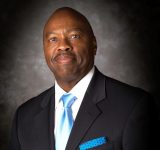
Q: How would you describe your vision for Metro’s implementation of advanced transportation, such as alternative modes of transportation, electric vehicles, alternative fuels, and autonomous vehicles?
A: Our agency has pioneered many strategies that use a combination of existing and emerging technologies to efficiently implement a strategy with the least impact to the environment. Some examples:
- In spring 2013, we became the first transit agency in the nation to operate an electric vehicle charging system at park and ride stations so electric vehicle drivers could link to transit. The result reduces EV anxiety range for those who choose to drive to the city core.
- We are also the first transit agency to incorporate a TAP card for paying for both bike share and bus/rail fares to fill a gap in the first and last mile mobility mode.
- This summer the Los Angeles County Metropolitan Transportation Authority (Metro) will award the largest purchase of renewable natural gas (biomethane) in the country. Biomethane combined with our ultra-low NOx engines being installed in our buses will result in more than 70% GHG-reductions from our already clean fleet compared to the current use of fossil natural gas.
- We are the largest provider of renewable energy in the county with about 7 megawatts of power already available within our system. We are in the middle of a procurement cycle to put in renewable energy at four more locations, one of which will result in a net zero energy facility.
Q: What are your primary goals for Metro’s integration of new technologies in the next five years?
A: Metro is in the forefront of technology implementation in many areas including:
- Vehicle technology: ultra-low NOX engines available in the market; lightest but safe bus body materials as well as computerized system diagnostics; use of renewable fuels (biomethane beginning summer 2017).
- Facilities: use of resource efficient fixtures; new greener materials; renewables such as solar and flywheel technologies that produce up to 7 megawatts of energy.
- Construction: advanced computer aided design using Building Information Management Systems, noise and vibration monitoring systems.
- Mainline: catenary monitoring systems for enhanced notification of mainline failures.
- Transportation Systems: Electric Vehicles, Carshare, Bikeshare and other modes of on-demand systems of transportation.
Q: What barriers and opportunities exist in the LA region for Metro to implement new modes of transportation? How is Metro addressing these obstacles and opportunities, and how can the LAEDC assist in those efforts?
A: Metro uses technology to its advantage for a variety of reasons but primarily to:
- Reduce the impact of our operations to any human health and environmental concerns.
- Create efficiencies in the design, construction, operations and maintenance of our infrastructures.
- Increase the efficiency of service.
- More objectively and systematically maintain a state of good repair.
- Allow for a safer, more environmentally friendly workplace and system.
- Lead in early implementation and open opportunities to monetize environmental benefits for revenue-generation.
- Increase the economic opportunities for small niche technology firms.
- Allow for the creation of a more resilient, reliable, infrastructure and enterprise.
The mode of transportation as we know it is slowly changing and Metro needs to remain relevant not only today but in the future. With the advent of on-demand systems such as Uber and Lyft, Metro has to find ways of incorporating its transportation network into these systems. Some of the challenges we face in our current offerings are:
- Finding the most appropriate and convenient modes of first and last mile transportation. For example, one would not necessarily take bike share or walk during a very hot day.
- Riding a bus or train might be the most convenient but the connect times could be ill-timed, so the trip becomes less efficient than driving a car.
- Integrating bus schedule and road conditions information to allow our patrons to make a more informed choice on whether to stay on the bus/train or use an alternative mode of transportation.
- Needing to further enhance the customer experience in our buses and trains.
- Seamless integration of our on-demand systems in availability, schedules and integrated system fares payment.
We are finding ways to address these issues by understanding how we can partner with other government and private entities for optimum solutions. One example would be the use of analytics to find patterns and create algorithms that can then be implemented to increase operational efficiency. Using the same analytics, we also learn from our lessons and shortcomings to improve our system through proper planning, efficient construction, and ensuring a consistent state of good repair. Another example would be our partnership with the Los Angeles Cleantech Incubator to understand better our options in an emerging ecosystem of technology solutions that are most appropriate for our challenges.
Q: How do you expect the regional economy will be impacted by the passage of Measure M?
A: The latest economic forecast by the Los Angeles County Economic Development Corporation (LAEDC) estimates that more than 465,690 jobs and $79.3 billion in economic output could result from the projects funded by Measure M in its first 50 years.